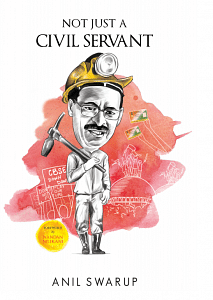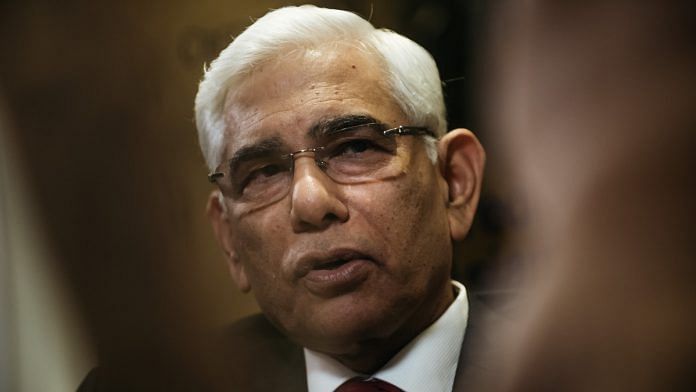All hell seemed to have broken loose when the CAG released the audit report on the allocation of coal blocks made between 2004 and 2010.
Vinod Rai was the CAG when the audit of coal block allocation was done. Responding to some of the questions against the report, in his book Not Just an Accountant, he has raised certain pertinent questions— “What was the CAG’s folly in this entire saga? The decision to audit the Ministry of Coal? Or the decision to make the audit report public by placing it in Parliament?”
The CAG was absolutely right on both these counts and in pointing out the flaws in the process of allocation of coal blocks that was termed as ‘nontransparent’ and ‘discretionary’. However, was the CAG wrong in determining the loss to the public exchequer? Was there a need to make a public spectacle of what he thought was right? Did this create an environment where decision making became even more difficult? These are some of the questions that should have been raised but were neither raised nor answered. Almost everyone was blinded by the enormity of the issues that came to the fore but were blissfully oblivious of the implications of stretching and highlighting the issues in the way it was done.
In the book, data from the CAG report was used and the calculations were worked out as follows:
(a) Average Coal India Limited selling price: INR 1028/Ton
(b) The average cost of coal mining: INR 583/Ton
(c) Financing cost: INR 150/Ton
(d) Financial Benefit {a-(b+c)}: INR 295/Ton
(e) Extractable Reserves: 6282 MT (f) Financial Gain {dxe}: INR 1,80,000 cr
Let us look at each one of these aspects. The cost of coal mining by Coal India Limited (CIL) ranges between INR 400 and INR 4000 per ton. Given this wide range, arriving at an average cost of mining, as was done by the CAG, was most inappropriate. In fact, the cost of mining varies significantly from one mine to the other because of several factors. There are issues relating to stripping ratio, grade of coal and transportation cost that were totally ignored by the CAG in arriving at the correct numbers. There was another aspect to it as well. Apart from the cost of mining, the then Coal Secretary had conceded before the Parliamentary Committee that there was a stark difference in the quality of coal in the blocks with the CIL and those given to private parties for captive mining. Hence, use of CIL numbers as benchmarks was faulty. If one looks at the statistics provided by the Coal Controller of India for the year 2014-15, it is evident that while 33.20% of the coal mined by CIL was of superior quality (Grades 1 to 9), only 9.4% of the coal mined by captive miners was of that grade. Similarly, the stripping ratio for captive mines was much higher than the one for Coal India mines. During the year 2013-14, it was 1.89 for Coal India and 3.46 in the captive blocks.
Such a calculation led to the cancellation of even those mines for which there are no takers even now. A careful calculation (if at all) would have clearly determined the ‘windfall’ gain from each mine. However, in a rush to give a report, average numbers were used. If mine-wise analysis, based on facts, had been made, allocation of only those mines would have been cancelled where there was a windfall gain. Consequent to the CAG report, allocation of even underground mines (where the cost of mining was remarkably high) was also cancelled. Ironically, as mentioned earlier, there are no takers of such mines even today. There were indeed some mines where there were huge margins and the allocation of such mines deserved to be cancelled but we ended up dumping all the allocations lock, stock and barrel.
The next logical question would be, if margins were not so high, how did the government manage to garner an estimated amount of INR 1.96 lakh crores by way of an auction of only 31 mines that were auctioned in 2015? We must look at the context of the auctions. The bidding in the auction was decided by the following factors—
1. Perceived (actual) shortage of coal in the country
2. Uncertainty about imported coal price and availability
3. Committed expenditure in fixed assets like power/steel plants that were ready for production, but the allocated blocks were cancelled.
4. Uncertainty about the future availability of coal blocks.
All the above factors led to ‘irrational bidding’ for most of the blocks. The following points support this:
(a) The auctioned blocks were supposed to have produced 56 million tons. But, on an average, they are producing only 16 million tons per annum so far. In fact, a number of blocks haven’t even started production.
(b) Some allottees went to the court with a view to somehow wriggle out of the hole they had gotten themselves into.
Ironically for 9 blocks put on auction during the 4th round in 2016, there were hardly any takers. No auction took place thereafter though there are still 120 blocks. If the CAG’s calculations were extrapolated, then there would still be around INR 3.13 lakh crore tied up in these blocks. If there was a margin of INR 295 per ton, then why were there no takers?
What the CAG could not visualise was the impact of Coal India production on the price of coal available in India. As the production of coal increased, and as the availability improved, the auction price of Coal India came down substantially. This affected the desire of the entrepreneurs to go for coal blocks. The so-called margin of INR 295 as determined by the CAG was not available. As argued earlier, it is a debatable point whether such a margin was ever available on every block. By clubbing all the blocks together in deciding the ‘right’ and the ‘wrong’, enormous damage was done. The fact that some of the blocks were auctioned for more than INR 295 per ton does not justify the determination of ‘windfall’ for all the blocks. Like a true auditor (and not an accountant), details should have been worked out for each block. Averages do not work in such situations.
Vinod Rai states in his book that all the records showed was that the Committee met, deliberated and merely recorded the name of the block allotted to a company, and the state where the end-use plant existed. He finds fault with this. As an ex-civil servant, he should know that that is how the minutes are recorded, especially when there is a consensus. It is only when there is a difference of opinion that such an opinion and the reasons for overruling it are recorded. The CAG, it appeared was on a fault-finding mission. Hence, apart from finding fault where it did exist, he also found fault where it did not.
The job of any civil servant, more so of the CAG, is to do his job quietly and not go to town (though this is changing fast). Gauging the mood of the country, the CAG report was ‘launched’ at a press conference. The image of the Deputy CAG flashing the report before the media is etched in everyone’s memory. Yes, a wrong had been committed. Yes, it is the job of the CAG to detect these ‘wrongs’. Yes, it is also the job of CAG to inform the parliament about the wrongs. However, perhaps making a public spectacle of the report was not becoming of a civil servant. In his book ‘Not Just an Accountant’, Vinod Rai justifies going to the media. He was right in doing so. However, he played to the gallery in the way the press meet was organised by the CAG. He has set a precedent where future CAGs may also want to become Vinod Rais. His immediate successor did try to become one but met with stiff resistance from a much stronger government.
Had the CAG taken care to go into the details of each mine and had he not taken the ‘half-truth’ to town, the consequences on the decision-making process would not have been so devastating. Bureaucratic decision-making suffered enormously. It is debatable whether the high profiling of the report by the CAG was essential to correct the system. It would be too much to credit the CAG for the transparency that came about in the later auctions of the coal blocks. Transparency was made possible by the commitment of the new government. Transparency was built in areas where the CAG had no role to play whatsoever.
 This excerpt was taken with permission from the book ‘Not Just a Civil Servant’ by Anil Swarup. It was published by Unicorn Books.
This excerpt was taken with permission from the book ‘Not Just a Civil Servant’ by Anil Swarup. It was published by Unicorn Books.




If then coal secretary could have raised his objection to the present Govt ,there could have been a different scene in the coal productivity and cancellations of coal blocks.
It is still open to get it corrected if there is will there is way.
I am a victim of descision made on the basis of this CAG report.
Vinod Rai is enjoying the job after retirement and I become jobless in the earning age.